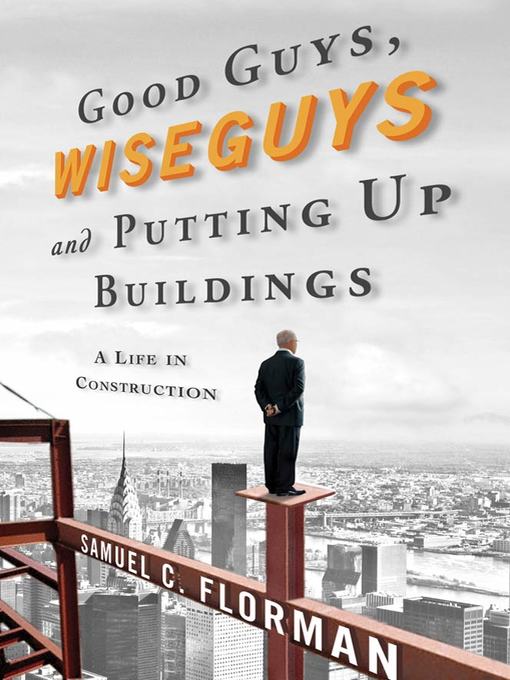
Good Guys, Wiseguys, and Putting Up Buildings
A Life in Construction
- اطلاعات
- نقد و بررسی
- دیدگاه کاربران
نقد و بررسی

January 23, 2012
From the end of the Second World War into the 21st Century, engineer and author Florman worked as a general contractor in the greater New York City area. Through his job, Florman participated in all the major development trends of his era—from suburban school building to bidding for public housing, to raising the projects of “starchitects” in the latest real-estate boom. Florman’s profession brought him in contact with a remarkably diverse range of people—Japanese POWs in the South Pacific when he was Navy Seabee, mob-linked carters in Manhattan, and the likes of Frank Gehry, Philip Johnson, and Robert Moses. For stretches the book reads like a long retirement speech. Florman looks back over a long and successful career with an engineer’s even temperament and he is careful, at times too careful, to be politic. The fact that Florman works thematically rather than chronologically also bogs down the narrative. Florman writes very little about his personal life and the most interesting chapters—like the one on the mafia—don’t involve him directly. However, he does provide a unique insider glimpse into the politics of building the most important city of the 20th century.

February 15, 2012
A valedictory account of a life spent in large-building construction in New York City. In addition to his duties as chairman of Kreisler Borg Florman General Construction Company, Florman (The Aftermath: A Novel of Survival, 2001, etc.) has authored six books and more than 250 articles. Here he combines memoir with an account of the hazards, complexities and joys of his trade. The resulting synthesis is somewhat unwieldy, although Florman's style is accessible and wry. The author writes that despite the litany of grief associated with the trade, ranging from violent mobsters to risks on the job site, "I look back on this career with relish...because of the challenges met, the rousing adventures encountered." It seemed an improbable occupation for a bookish Jewish boy in Depression-era New York, but wartime service in the Seabees opened up a fascinating industrial world to him: "Such [broad] experience can't be bought in engineering school." After the war, he worked his way up in the trade, first as an estimator, then a project manager; feeling frustrated, he joined a general contracting start-up in 1956, and soon bought in as a partner. KBF went on to have both success and good fortune, moving from school construction in the 1950s into large-scale urban and government projects. Despite Florman's keen discussions of the complex minutiae of construction firms' actual operation, his approach is mostly sentimental, with a lot of focus on the characters he's known (especially at his own firm). The book is organized to highlight certain themes relevant to the industry's development through the 20th century. Readers may wish the author had dug deeper into his juiciest subtopics, including the legendary corruption of building inspectors, the true degree of Mafia penetration in the industry, the still-contested role of women and the violent struggles for affirmative action on job sites. Succeeds in demystifying the world of large-scale urban contracting, but will probably have more emotional resonance for older readers, in and out of the field.
COPYRIGHT(2012) Kirkus Reviews, ALL RIGHTS RESERVED.

February 15, 2012
Florman didn't mean to wind up in the construction business. When he enlisted in the Navy in 1942 (he was 17 years old), he joined the Seabees, the naval construction battalions, and the rest of his life just sort of followed from there. This engagingly written memoir doesn't just take us through the author's life as a building-builder; it also offers an insider's view of an aspect of American history that most of us have heard about but don't really understand (for example, what we think we know about organized crime and the construction business may well be true, but that's only a small part of the bigger picture). The author takes a potentially dry subject and makes it not merely informative but also downright fascinating. The book is heavy on Florman's career, rather lighter on the personal side of his life, but that's OK because his insights into the construction business, its growth and experimentation and internal culture, is more than enough to keep us reading.(Reprinted with permission of Booklist, copyright 2012, American Library Association.)




دیدگاه کاربران